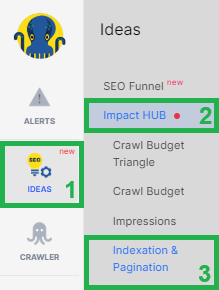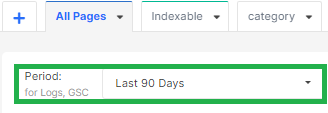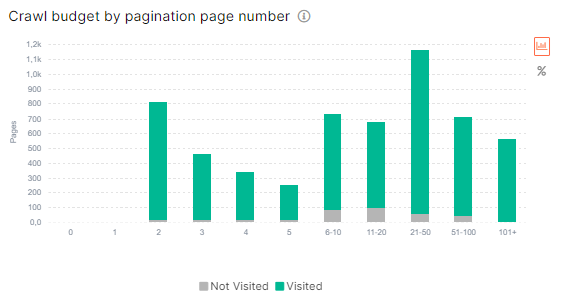
How to analyze pagination in search engine logs
Pagination pages play a crucial role in the structure of websites, providing users with organized access to a large amount of content. However, if these pages aren’t properly managed for indexability or proper crawling permissions through robots.txt, it can lead to decreased visibility on search engines. Similarly, if the pagination is 404, then this can also cause some problems in the crawl budget. Therefore, it’s imperative to thoroughly analyze pagination in your website logs to ensure optimal search engine performance.
Why is it important to analyze pagination pages scanning by search engines?
The significance of scrutinizing crawl behavior on pagination pages cannot be overstated. Many websites utilize numerous pagination pages to categorize and present their content effectively. By delving into your log data, you can gain insights into whether the extensive pagination is truly necessary, or if a more refined approach would suffice. It’s plausible that search engine bots may not explore pages with a pagination depth beyond a certain threshold, such as 10 or 20. Hence, meticulous analysis of which pagination pages are being crawled is indispensable.
Exploring pagination analysis techniques
There are two primary methods to undertake pagination analysis in search engines logs.
1. Create a segment. Establish a distinct segment where you can define specific rules for pagination pages. This method offers customization and enables focused scrutiny of pagination behavior.
To create a segment, click on the “Create a new segment” button. Use a rule that matches your pagination structure. For example, if the pagination URL is https://example.com/category-1?page=2, use “Page URL” – “Contains” – “page-“. Or you can use regular expressions if you use different pagination URLs on different page types (like a page-[0-9]+|p\=[0-9]+|number- etc.)

2. Utilize built-in functionality. Alternatively, leverage the new built-in functionality tailored for pagination analysis. Navigate to the “Ideas” section and access the “Impact HUB” – “Indexation & Pagination” dashboard.

Specify the time period of interest.

Access the “Crawl budget by pagination page number” chart. You can initiate pagination rule configuration by clicking on the separate button.

In the “Crawl budget by pagination page number” chart to view detailed insights into the crawl behavior. This chart will display the number of pages crawled for each pagination number. You will see how many visits the bot has made to pagination pages numbered 2, 3, 4 and so on. Chances are, you’ll find that pages with 100+ pagination numbers have had very few bot visits. Pages that experienced significant bot visits are highlighted in green, while unvisited pages, detected during the crawl, are marked in gray.
You can also examine the organic traffic of pagination pages on the “Traffic by pagination page number” chart. The traffic of the pagination pages should not exceed the traffic of the first page of the pagination.

Further granularity is achieved by clicking on specific chart columns, revealing the exact pagination pages that were crawled.
Gaining insights from pagination crawl rate analysis
Conducting thorough analysis of pagination pages can unveil valuable insights. But always check whether all these pagination pages are indexable or not. Also check that pagination pages that are visited or not visited by search engines return the correct status code and that they are not canonicalized.
By scrutinizing pagination behavior, you can gauge the extent to which search engine bots explore the depths of your pagination structure. Should important content reside within the deep pages of your pagination, strategic considerations are required. To ensure this valuable content is accessible to search engines, contemplate strategies to relocate it closer to the main URL.
You should also ensure that search engines do not crawl too many 404 pagination pages and that there are no duplicate pagination pages (like page=1 or page=0 – the same as the first page without pagination).
In conclusion, the meticulous analysis of pagination behavior through comprehensive log evaluation empowers website owners to optimize their search engine visibility. By ensuring proper indexability, canonicalization, and crawl budget management, websites can position themselves for higher search rankings and improved user accessibility. Utilizing the outlined techniques and insights, webmasters can make informed decisions to enhance their online presence.

